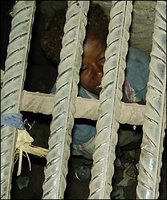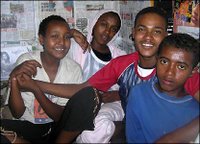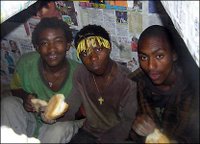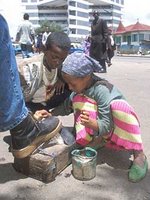Founder and Director of the

Thursday, June 15, 2006
6:00 pm to 9:00 pm
Hospital Audiences, Inc.
548 Broadway, 3rd Floor
New York, NY
Entrance Fee: $30.00
(Proceeds will benefit the Lalibela Project)
We request the favor of an RSVP
by returning the enclosed card or going to
www.lalibelaproject.org/RSVP.html
The vision of the Lalibela Project is to create possibilities for children in an environment that will spark an epidemic of empowerment resulting in extraordinary life-altering experiences. The Lalibela Project, a non-for-profit organization, aims to develop and support an orphanage center in the village of Lalibela, Ethiopia. Providing housing and education will broaden these children’s perspectives and encourage them to dream.













